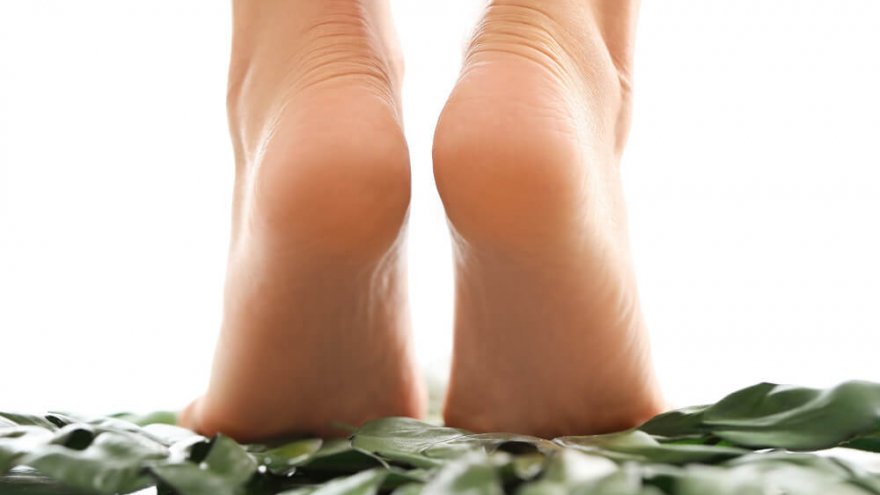5 Ways to Decrease Your Plantar Fascia Pain

Runners hate experiencing aches and pains that sideline them from running. If you have not yet experienced this for yourself, well… lucky you.
One of the worse things for a runner to experience is plantar fascia pain.
Plantar Fasciitis is painful and can leave you hunting desperately for solutions.
What Is Plantar Fasciitis?
Inflammation of the plantar fascia. This is the thick band of tissues running across the bottom part of your foot. It connects the heel bone to the toes.
Dealing with plantar fascia pain can be truly debilitating. Knowing what PF feels like and how to deal with it can be helpful so you don’t end up sidelined for a long time.
Symptoms of Plantar Fasciitis
Many general symptoms could be pointing to Plantar Fasciitis.
- Foot pain increases after exercise
- Heel pain – either the bottom of your foot or nearby
- Discomfort in the arch of your foot
- Swollen heel
- Pain is worse first thing in the morning
- Tight Achilles tendon
- Ache and/or pain that continues and lingers on for weeks or months
Does Plantar Fasciitis Hurt All Day?
Although Plantar Fasciitis can hurt all day, it is usually worse first thing in the morning. New Plantar Fasciitis is typically terrible in the morning and then wanes as the day goes on.
If you leave Plantar Fasciitis and let it fester, it can start to hurt for progressively longer periods of time.
Plantar fasciitis, or PF, will worsen if left untreated. Do not make that mistake.
Does Plantar Fasciitis Hurt to Touch?
Your Plantar Fasciitis will be tender to the touch. Having said that, putting pressure on it can also help it to heal.
Some of the techniques recommended to alleviate PF are rolling it on a ball, rolling on a frozen water bottle, etc.
You can also use a massage stick on your calves, which can help with PF.
How Long Does a Plantar Fasciitis Flare Up Last?
For people who pull back on activity relatively quickly and take steps to improve the PF symptoms, things can be back to normal in a couple of months.
However, most people suffer from PF for considerably longer than that.
Plantar Fasciitis can last anywhere from 6 to 18 months.
As you can imagine, this can be highly frustrating for athletes.
What Happens if Plantar Fasciitis is Left Untreated?
Plantar fasciitis can cause permanent problems. First of all, you could rupture your plantar. If this stress fracture sounds awful, it’s because it is.
People can even have a permanent disability from ignoring their Plantar Fasciitis problems.
Signs that your plantar has ruptured include a collapsed arch, pain when your toes are bent, unbearable pain when walking, and/or a lump in the bottom of the heel or arch of the foot.
5 Ways to Treat Plantar Fascia Pain
Treatments for plantar fascia pain include the following:
- Massage: There are three main types of massage to help with PF. Roll the bottom of the foot around on a massage ball. A simple golf ball will suffice if you don’t have one of those. Using a water bottle filled with water and then frozen is another great massage tool. Lastly, you can use your hands and massage the sore parts of your foot.
- KT Tape: Kinesiotape can be used for pain relief around the inflammatory area.
- Supportive Shoes: Wear good arch support shoes with good cushioning at all times if you are suffering from PF. Don’t wear shoes that lack support (like flip flops) or heels.
- Braces or Night Splints: There are products called night splints that can help you with your Plantar Fasciitis.
- Exercises: You can do many exercises to help get rid of Plantar Fasciitis.
Some people have lateral Plantar Fasciitis pain, which can be treated with orthotics, orthopedic shoe inserts, taping, and/or soft tissue therapy.
If the pain persists, you should ask for medical advice and physical therapy.
Risk Factors for Plantar Fasciitis
Age is a risk factor for PF, as most people with this are between 40 and 60 years old.
Engaging in certain types of exercise also places you at higher risk. Anything that puts a lot of pressure on your heel, such as running, can be a cause of Plantar Fasciitis.
Being overweight/obesity can also make you more likely to get PF, as can poor foot mechanics.
Lastly, having an occupation where you spend long periods on your feet could leave you more likely to get plantar issues.
Latest Articles
 Is Running on a Treadmill Easier Than Running Outside?Runners have their own preferences, whether it is treadmill running, running outside on the road, or exploring trails. So...
Is Running on a Treadmill Easier Than Running Outside?Runners have their own preferences, whether it is treadmill running, running outside on the road, or exploring trails. So... Is It OK to Use Trail Running Shoes on the Road?While trail running shoes can be used on roads, especially in situations where a runner encounters mixed terrains or pref...
Is It OK to Use Trail Running Shoes on the Road?While trail running shoes can be used on roads, especially in situations where a runner encounters mixed terrains or pref... How to Fix Sore Quads After Running?Rest, ice, gentle stretching, and over-the-counter pain relievers can help soothe sore quads after running. Also, ensure ...
How to Fix Sore Quads After Running?Rest, ice, gentle stretching, and over-the-counter pain relievers can help soothe sore quads after running. Also, ensure ... 10 Fruits With The Most Electrolytes to Replace Sports DrinksThese fruits are high in electrolytes such as potassium, magnesium, and calcium, essential for hydration, muscle function...
10 Fruits With The Most Electrolytes to Replace Sports DrinksThese fruits are high in electrolytes such as potassium, magnesium, and calcium, essential for hydration, muscle function...

